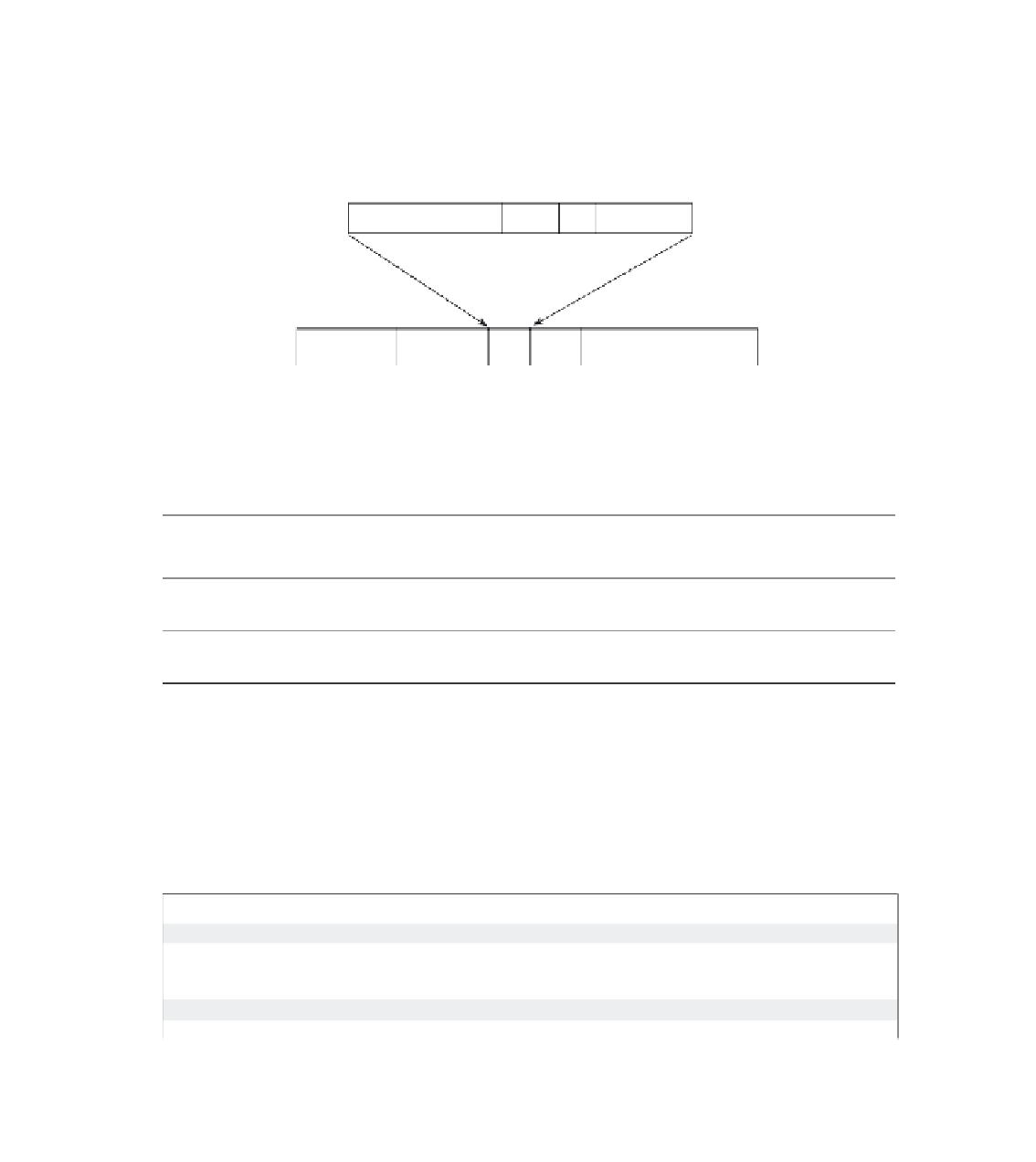Information Technology Reference
In-Depth Information
IEEE 802.1q Frame Format
As shown in Figure 4-32, IEEE 802.1q inserts a 4-byte tag after the Source Address field
(before the Type/Length field) of Ethernet frames.
IEEE 802.1q Frame Format
Figure 4-32
16 bits
3 bits
1 bit
12 bits
IEEE 802.1q tag
TPID
priority
CFI
VID
Ethernet v2
or IEEE frame
Type/
Length
DA
SA
tag
data
FCS
The tag fields are described in Table 4-11.
IEEE 802.1q Tag Fields
Table 4-11
IEEE 802.1q Field
Description
TPID
16-bit Tag Protocol Identifier, which indicates that an 802.1q tag follows.
Priority
3-bit IEEE 802.1p priority, which provides 8 levels of prioritization.
CFI
Canonical Format Indicator, which indicates whether the MAC addresses are in
canonical (0) or noncanonical (1) format.
VID
12-bit VLAN identifier that allows 4096 unique VLAN values; VLAN numbers 0,
1, and 4095 are reserved.
IEEE 802.1q Configuration
On router interfaces, subinterfaces are created for each VLAN. On each subinterface, the
encapsulation is set to IEEE 802.1q to enable trunking to the switches. As shown in Example
4-15, each subinterface is configured with a different VLAN number with the
encapsulation
dot1q
vlan-number
command.
Example 4-15
IEEE 802.1q Configuration Example
interface fastethernet 1/1.1
encapsulation dot1q 10
ip address 192.168.1.1 255.255.255.0
!
interface fastethernet 1/1.2
encapsulation dot1q 20
ip address 192.168.2.1 255.255.255.0














Search WWH ::

Custom Search